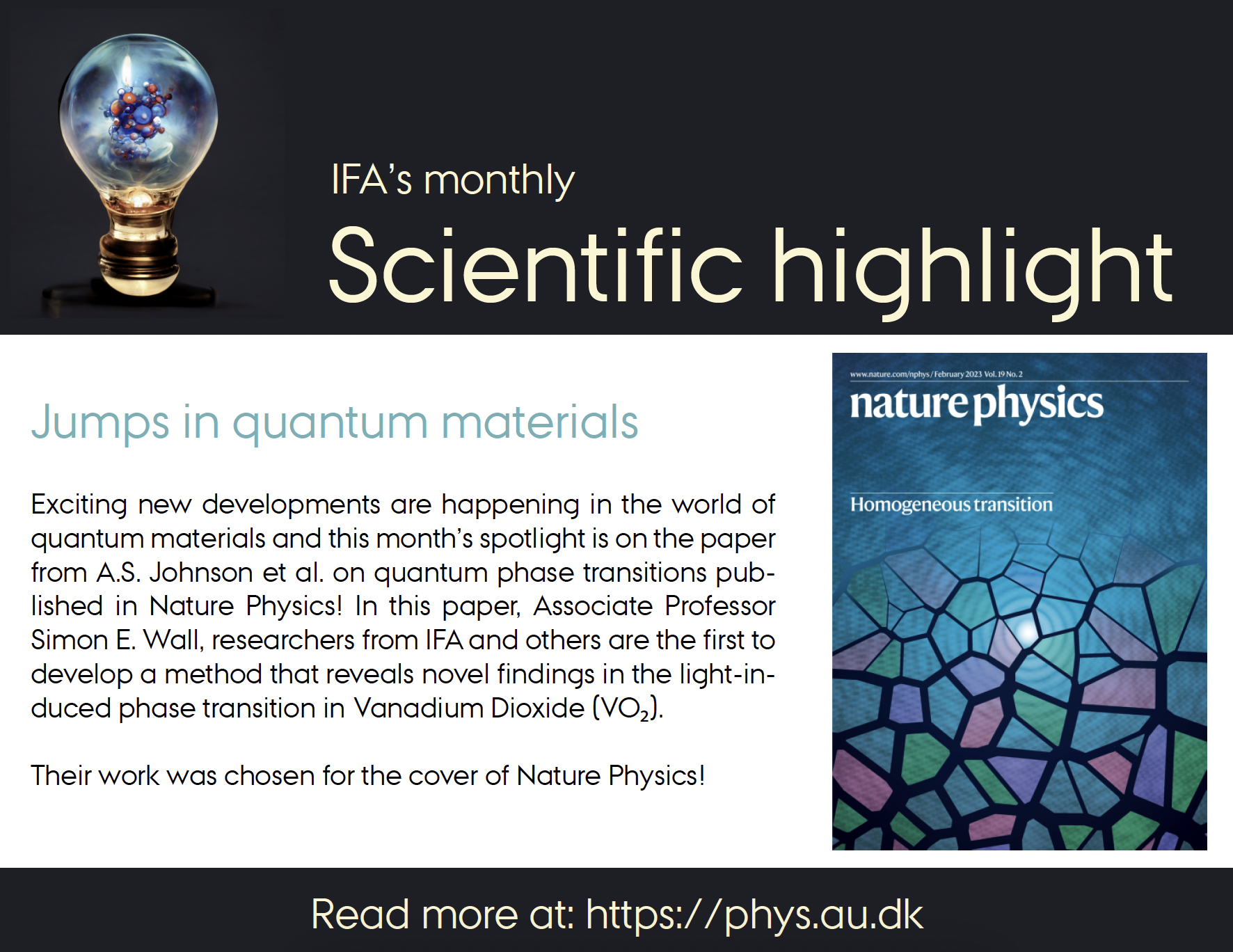Scientific Highlight - March
Title: Jumps in quantum materials

Exciting new developments are happening in the world of quantum materials and this month’s spotlight is on the paper from A.S. Johnson et al. on quantum phase transitions published in Nature Physics! In this paper, Associate Professor Simon E. Wall, researchers from IFA and others are the first to develop a method that reveals novel findings in the light-induced phase transition in Vanadium Dioxide (VO₂). They used coherent X-ray imaging resolved in the nanometer spatial scale and femtosecond timescale. Observations made in this paper demonstrate the importance of resolving imaging and measurement techniques when studying phase transitions, because new behaviour may be just 100 femtoseconds away from observation. Their work was also chosen for the cover of Nature Physics!
VO₂ is a particularly influential crystal in quantum materials studies as light can control its properties. Because of its importance in quantum research, VO₂ has a known set of properties, which are exhibited during phase transitions. For instance, prior to completing a phase transition, bonded vanadium pairs within a region break, with the band gaps between bonded pairs disappearing within about the same timeframe. A bandgap is generally understood to be the gap between the valence and conduction bands of an atom in its solid state. Essentially, a band gap is a space where it is impossible for an electron to orbit its nucleus. The collapsing of band gaps is understood to be an important aspect of phase transitions. But, while the existence and collapse of band gaps during phase transitions in VO₂ are known, the intermediate transitory stages of the collapses are still a mystery. Several research groups predict a “transient” phase of VO₂ called the monoclinic metal that doesn’t have the band gap and also doesn’t go through structural changes. This state was predicted to live on the nanosecond timescale but has not been directly observed yet. The research in this paper specifically looks at tracking this transient phase to investigate what’s going on.
The researchers investigate the transient phase using coherent X-ray light to break the link between bonded vanadium ion pairs. Once these bonds are broken, a transition from the insulator to the metallic phase is triggered, a transition which takes place on an ultrafast timescale. In fact, the transition from insulator to metallic occurs over the course of 200 femtoseconds (10⁻¹⁵s). The metallic phase has generally been theorized to be fleeting, often observed to begin shifting states once again after about 100 picoseconds (10⁻¹²s).
Observations from this research did not see the predicted phase, but instead, see a different kind of state - the “strain” state. Researchers discovered that the monoclinic metallic phase is under immense orthorhombic strain during transitions. This new observation was made by following the phase transition at the femtosecond timescale. This is revolutionary given that until now it has been very difficult to combine nanometer spatial resolution and femtosecond time resolution. At this resolution, researchers observed that the initial dynamics of a phase transition with regard to time are not affected by a molecule’s immediate surroundings. That is, molecules are not necessarily influenced by the behaviour of their neighbours. This may have some impact on the local crystallization of the monoclinic metallic state.
The fickle nature of the quantum realm requires the most accuracy possible when it comes to measuring, interpreting, and attempting to understand its goings-on. Observations made in this paper demonstrate the importance of resolving imaging and measurement techniques when studying quantum phase changes. New behaviour may be just 100 femtoseconds away from observation!
Read the article here.
